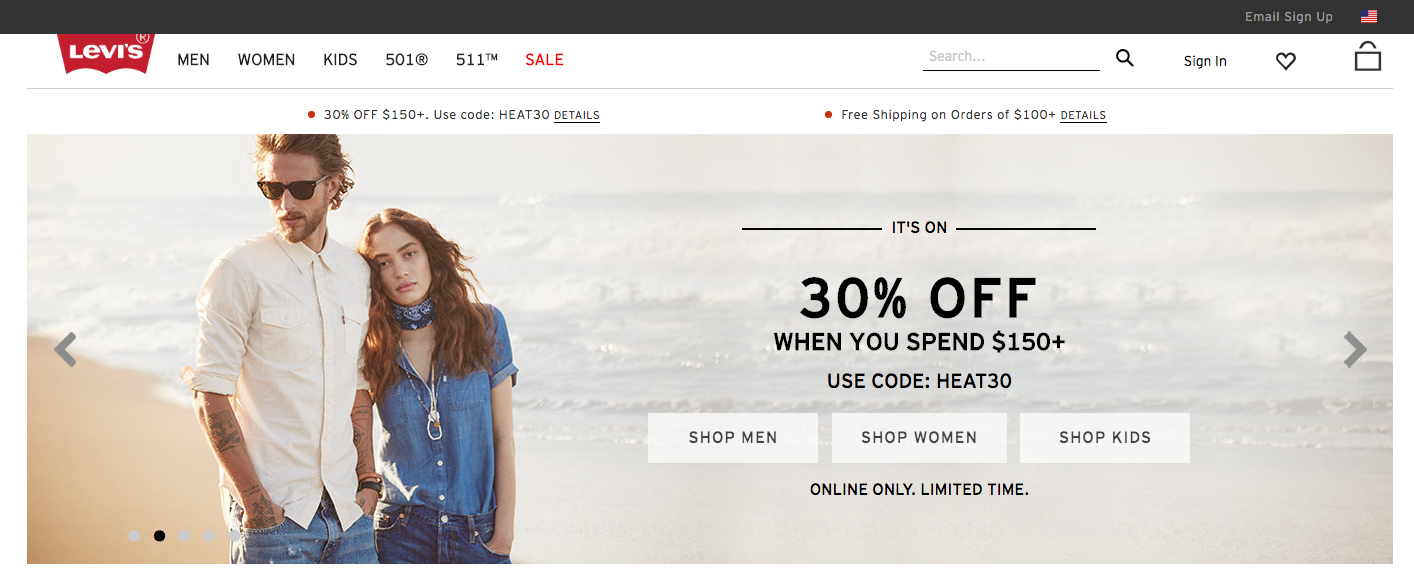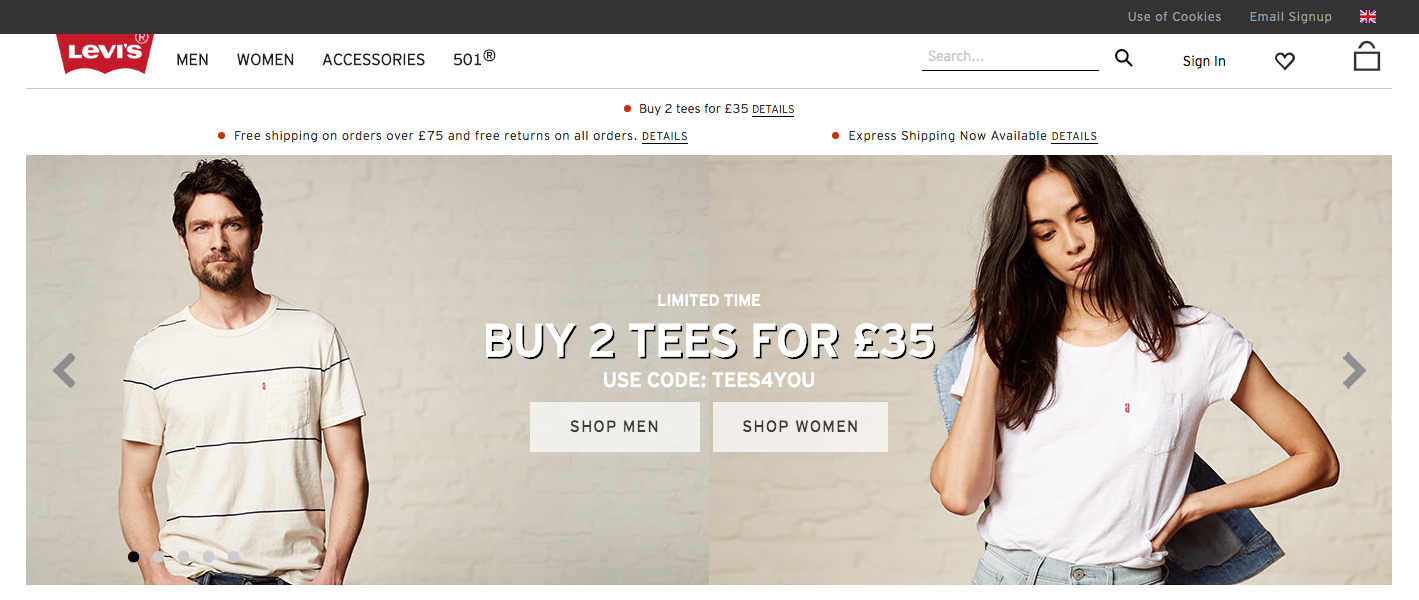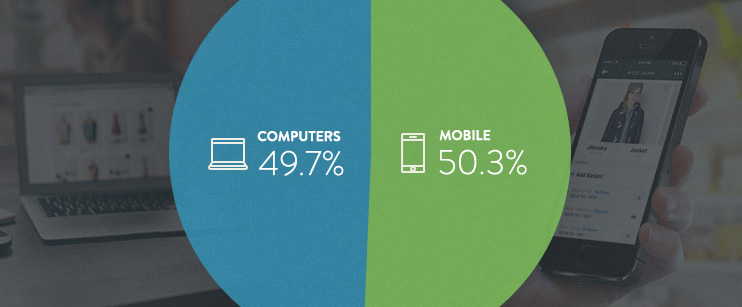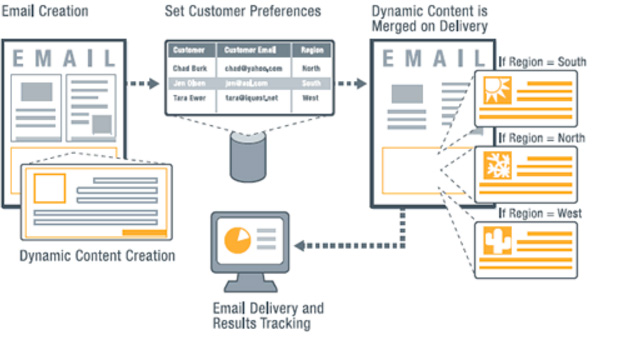Imagine walking into a store to find that only the products that interested you were displayed. From the magazine rack through clothing to the food hall, the store was laid out to reflect your tastes and interests. You’d go back, right? You’d buy, right?
In an e-commerce store, you can literally do that, and you can start before the visitor even reaches your website and continue after they leave.
Personalizing every stage of the customer journey makes a customer’s experience of your store and your brand way better.
Customers love personalization:
- 59% of shoppers think it’s easier to find more interesting products on personalized e-tail stores
- 56% are more likely to return to a store that recommends products
- 53% believe that personalized stores offer a valuable service
- 45% are more likely to shop on a site that offers personalized recommendations
Retailers should love it too:
- Personalized products and offers improve click-through rates by 14% and boost conversion rates by 10%
- Adding personalization experience to shopping could result in a 7.8% increase in sales, according to O2’s ‘The Rise of Me-Tail’ study
- 94% of companies say personalization is ‘critical to current and future success’
The kicker?
- Companies that use data-driven personalization as the main basis for their marketing and sales decisions can improve ROI by as much as 15% – 20%
Great. Everyone’s happy, right?
Not quite. While 83% of e-tailers think they do a satisfactory job of offering their customers a personalized experience, only 29% of their customers agree. There’s a lot of room for improvement, and the e-commerce stores that make personalization work for their customers will see it work for them too. In a marketplace where only a third of customers feel they’re well-served, there’s a solid competitive advantage waiting to be picked up.
When you embrace personalization, you’re giving customers not just what they want, but what they expect. 85% of internet users say they specifically expect personalization.
Personalization by Channel
Modern consumer journeys are omnichannel. Looking at individual channels in isolation doesn’t make sense when you’re doing strategy because that’s not how customers look at them. For instance, mobile cart abandonment rates are notoriously in the high 90s, so people aren’t buying on mobiles, right?
Right. They’re shopping on mobiles, then the same person comes back and buys on desktop later. Look at devices or channels and the picture is distorted.
Tracking Across Channels?
Customer tracking across channels is difficult but it can be done and more accurate understanding of customer behavior is worth the effort. One effective method is to use Google Analytics’ User ID. User ID authenticates a visitor as a shopper on your website and is attached to them, not their device, so you can watch people not channels. There’s a how-to on this here.
For implementing personalization, though, it makes sense to look at channels individually because the techniques required are different. Personalization is more effective across channels – 40% of customers buy more from e-tailers who offer omnichannel personalization – but it has to be implemented within the limitations and opportunities each channel offers. It’s important to remember that we’re often addressing the same customer, but we can’t use the same methods on-site as for push notifications.
And it makes sense to start personalization efforts where your customers will start interacting with your brand: your website.
Content Personalization
Website personalization is the starting place of most e-commerce personalization efforts because it’s where your business happens – it’s where people pay. That’s likely to change as social channels integrate buy buttons into their user experiences, but for now it remains true for most e-tailers.
It’s also where your product pages live and where customers hopefully spend the majority of their shopping experience. And they want personalization: 74% of customers say they get frustrated when websites offer content that has nothing to do with their interests.
The majority of e-commerce customers will arrive directly onto product pages or other pages than the homepage, so personalization that begins with different banners or homepage product displays is of limited utility.
On the other hand, when customers arrive at your homepage you have limited information about them. When they arrive at a product page, by contrast, you know to some degree the products they are interested in, and you can begin personalizing on that basis by offering ‘products like.’
Acquiring Data for Content Personalization
The most effective way to immediately get useable data on your customers is to track their actions.
Track On-site actions like browsing, time on page, adds to cart, clicks.
Referral – where did the user come from originally? Which page did they see first? Most e-commerce site traffic arrives at product pages, not dedicated landing pages or the homepage.
Purchase Behavior
One of the most positive effects of onsite personalization is that you can increase the number of visitors who signup, giving you access to valuable data you can use to improve their website and messaging experience and encourage purchase.
Post signup, you can track:
- Social media behavior
- Demographic behavior
- Messaging interaction – responsiveness to emails, in-app messaging, SMS
- App download and retention
Onsite and purchase behavior tracking opens the door to personalization efforts that we’re all familiar with – ‘you might also like,’ upsells and cross-sells, and offers of discounts on similar products. We’re familiar with them because Amazon uses them to great effect.
Personalize Currency and Location
Personalizing by location is relatively easy. It can be done by ISP geolocation tracking, which compares a visitor’s ISP address with a list of physical addresses. It’s not 100% accurate, but it’s usually close enough to get time zones, currencies and general weather right.
Compare these home pages from Levi’s:
Even just offering people products and offers in their own currency saves them from having to get the calculator out, and makes the whole experience feel smoother.
Location data lets you start the process of personalization before you actually know anything about your visitor. Even before they browse any products, you can have some idea of what might be useful to them based on location: it’s not as simple as surfboards for Californians, scarves for New Yorkers, but basing the first content visitors see off of their geographical location isn’t a bad place to start.
Say My Name
As simple and obvious as it is, personalizing communications with a user’s name is hugely effective. Dale Carnegie pointed out that a person’s name is the most precious sound to them in any language. Having your name on something means it’s yours. Messages with your name on are specifically for you.
Message personalization can go way beyond putting customer names in the subject line, of course. But using customer names when you can is an effective way to make your e-commerce experience feel personal to them.
Another way to get a similar result is to use the first person – I want, I did – in onsite communications. Pop-ups that offer you ‘Tell me more’ or ‘no thanks, I don’t like saving money’ are a great way to do this.
Personas
Customer personas are often based on little more than a hunch. As you collect data on your customers, though, you can tighten up your personas until they’re effective. You can build entire funnels that transition across channels to guide each persona to purchase.
What’s more effective is to use personas as the beginning of the personalization process. You’d use persona-based funnels to begin with, then optimize the experience within each channel, based on the customer’s behavior within that channel. As you get more information on that customer, as they progress toward purchase, you have more chance to tighten up personalization.
Got an App?
Mobile now accounts for almost 45% of e-commerce sales, and over 50% of e-commerce browsing is done on mobile devices.
Outside of big-name news, social and gaming, apps have poor retention rates and are often uninstalled. To get the best results, offer an effectively personalized, mobile-optimized website first.
If you can persuade customers to download your app, usually post-signup, you have greater opportunities to personalize the app than you do the web browsing experience because you have access to more data. (This is one of the strong points of apps in customers’ eyes.)
You can personalize content more closely than a website, but you have the option to deliver personalized push notification and in-app notifications too, helping to solicit more user data, encourage purchase and increase retention. (Be careful: too many messages will repel users and lead to uninstall.)
The Message
If any marketing channel has a right to this title, it’s email. Email has incredible ROI, reaches out to customers in a way that they actually like and allows you to send what’s basically a personalized, targeted web page to your customers.
Personalization is essential to even modest email success: over 50% of people will automatically unsubscribe to emails that aren’t personalized. But personalization can offer you more than a foot in the door when it comes to email.
For one thing, email can be a great channel to get data that can later drive more effective personalization. That works most effectively if you use email welcome flows to ask for more information as you offer value; if you put a long signup form front and center when someone’s signing up they’re more likely to just click away or complete their purchase as a guest, and the effect is even stronger on mobile.
Dynamic Content
Dynamic content is content that’s assembled when the user visits, creating and displaying content that’s personalized to that user based on previous engagement and purchase history. It’s a good way to improve UX: essentially, each visitor gets their own website, tailored to their tastes. But you’re also getting the benefits of personalization, like better engagement, more time on page, lower bounce – and more sales.
Dynamic content can be effective for emails too. Based on user data you can supply emails whose appearance and copy differ depending on:
- Location
People in different areas of the country will have different interests at different times. For instance, Mardi Gras is a bigger noise in Louisiana than Massachusetts, but Bostonians will be more interested in St Patrick’s Day than folks from San Francisco.
- Interests
You can tailor your email’s body copy, offers and images to the interests a customer has told you about or demonstrated by on-site or email engagement behavior. If a user always clicks through when they get an email about jewelry, but never about other product categories, you know what to send them. (Don’t forget to offer them similar product categories too!)
- Lifecycle
Where in the customer lifecycle is the addressee? If they’re a new customer, they’ll want more basic information about your brand. If they’ve been a customer for years, you can assume greater familiarity, but you’ll also need to show them something new.
Conclusion
Offering your users a personalized e-commerce experience increases the chances that your visitors become customers and your customers return. It inevitably involves setup costs in time and energy, but the payoff is significant, affecting your bottom line now through increased purchases and in the future through higher average order values and improved retention.
About The Author:
Richard Bayston is a freelance blogger and copywriter covering tech, digital marketing and content strategy for SMBs. I’ve also been known to write on health and fitness. Find out more: Richard@RBCopywriting.com or @RBCopywriting. The rest of my time is spent arguing amicably with my wife and Googling the answers.
*Featured Image Source








